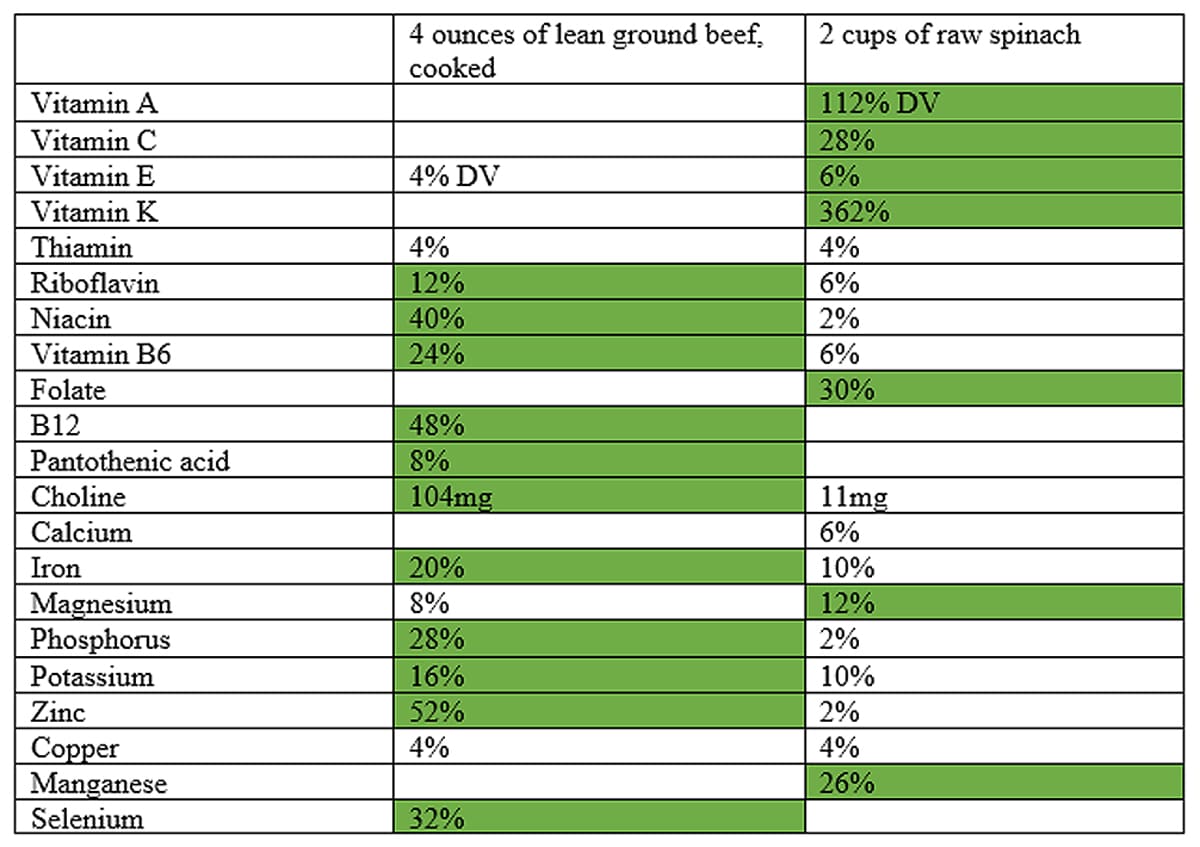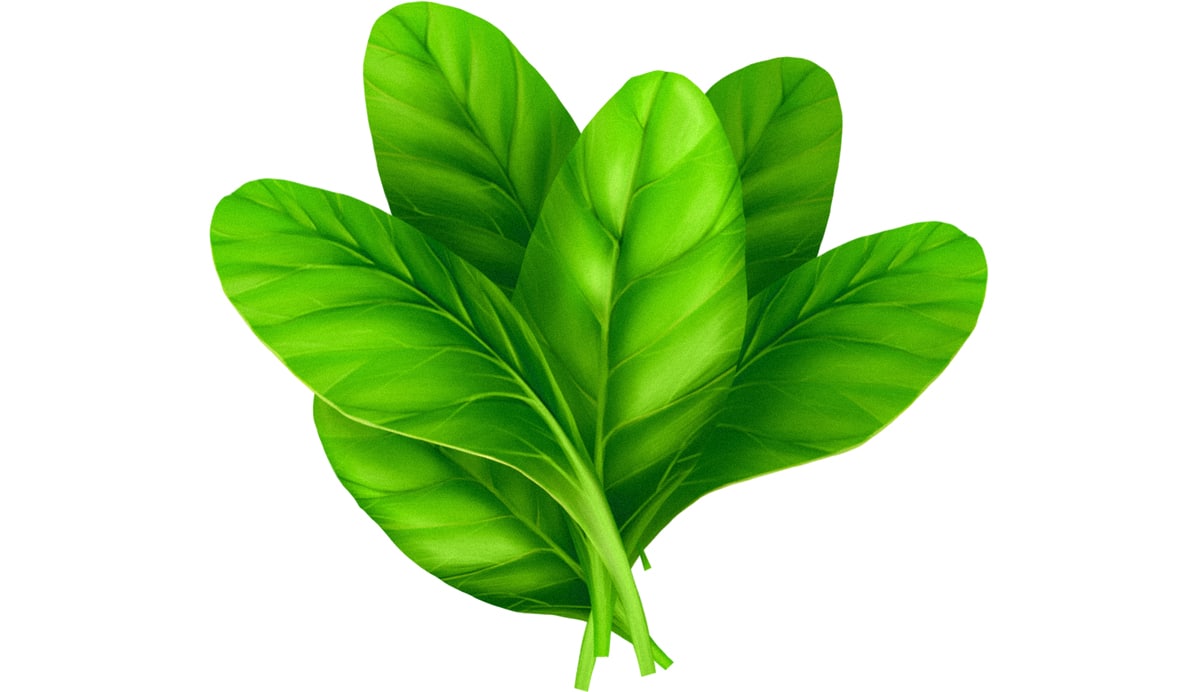One argument that vegans like to make against eating meat is the idea that “nobody needs animal foods.” If eating meat were necessary for a nutritionally complete diet, the argument goes, then maybe it would be justifiable in the name of survival. But since it isn’t, then choosing to eat animal foods is a luxury, and insisting on your own gastronomic pleasure over the health of the planet is just plain selfish.
Animal-eaters don’t help their case by insisting that meat is a source of protein – that’s true, but protein is actually one of the easier nutrients to get on a vegan diet. There are plenty of vegan protein sources. Most of them aren’t Paleo, but if vegans were worried about being Paleo, they wouldn’t be vegans in the first place. It’s very easy to get protein on a vegan diet, and protein is the wrong thing to focus on if you’re defending the health benefits of meat.
Instead, we should be looking at the incredible array of micronutrients (vitamins and minerals) in animal foods. It’s not just Vitamin B12 (although that’s important); it’s a whole list of nutrients that are either available only in animal foods, or available in more absorbable or digestible forms. The world isn’t divided up into “foods that provide calories” and “foods that provide micronutrients:” ideally, the calorie-dense foods in your diet should also be nutritionally rich, and meat is the perfect example.
Micronutrients in Meat
It’s amazing how many people will argue that meat is not nutrient-dense without actually ever considering a head-to-head comparison of meat and vegetables. Just to pick an example, let’s pit a serving of ground beef (4 ounces; that’s a little less than a typical hamburger patty) against 2 cups of spinach:
(the numbers show the % Daily Value for each nutrient that the food provides - this isn't perfect, but it's a reasonable estimation tool)

If anything, the beef here is making more of a micronutrient contribution to the meal than the spinach is. That doesn’t mean the spinach is a “bad” food. It just shows how the plant and the animal foods fill in each other’s gaps.
That’s really the point: plant foods and animal foods are both parts of a healthy diet. Plant foods have some nutrients that aren’t in animal foods, like Vitamin C or fiber. But animal foods also have benefits that you can’t really get from plants…
Some Nutrients are Only Available in Animal Foods
There aren't a lot of animal-only nutrients, but they do exist:
Vitamin B12. If you want Vitamin B12, you’ve got to eat some kind of animal product (meat, milk, or eggs) or take an artificially-created supplement. You cannot get it from spirulina, or from fermented foods.
Conjugated Linoleic Acid (CLA). Conjugated linoleic acid is a naturally-occurring trans fat (yes, it’s a trans fat that’s actually good for you. Surprise!). It’s particularly notable for its role in weight loss. And the only significant source is the fat from pastured ruminants (think: butter, tallow, and fatty beef or lamb).
Other Nutrients are More Absorbable from Animal Foods
Then there are the nutrients that are available on paper from both plant and animal foods, but in practice, animal foods are much better sources.
Vitamin K2. Notice how the spinach above is off-the-charts for Vitamin K? That’s Vitamin K1, and Vitamin K1 is great, but it’s not the same as Vitamin K2. The bacteria in your gut can convert K1 to K2, but the conversion isn’t very efficient and it doesn’t supply you with enough K2. It’s a much better bet to get some K2 yourself, from grass-fed animal foods (K2 is much higher in grass-fed meat because it comes from the cow converting K1 in the grass into K2. If the cow doesn’t have any grass in the first place, there’s nothing to convert).

Iron. Both the spinach and the beef above contain iron, but it’s not the same form. Iron has two forms: heme and nonheme. Plant foods contain only non-heme iron; animal foods provide a mixture of heme and nonheme.
Nonheme iron is much harder to absorb and use, and the absorption is much more dependent on what else you eat with the iron. That’s why the iron requirements for vegetarians are higher: it’s making up for how much harder it is for their bodies to actually use the iron they get. A better option is to just get your iron from meat and not worry about the special nutrient timing and absorption issues.
Vitamin A. Lots of plant foods have impressive amounts of “Vitamin A” on the label, including the spinach above. But what they’re really high in is some kind of pro-Vitamin A, one of several compounds your body can convert to Vitamin A (forms of pro-Vitamin A include beta-carotene, which is what gives carrots their color). This isn’t the same thing as the preformed Vitamin A you’ll get from liver or dairy products, and as usual, the conversion isn’t very efficient (unless you’re eating your pro-Vitamin A emulsified in oil, and unless you’re a rat in a lab, you probably aren’t).
Omega-3 Fats. Omega-3s are technically available from plant foods like flax seeds, but it’s not quite the same. The Omega-3 fats you get from plant sources are primarily Alpha-linoleic acid (ALA). To really use that the way Omega-3s ought to be used, your body has to convert that to one of two other forms, either DHA or EPA. The conversion is very inefficient, it may not occur at all for DHA, and it’s highly dependent on other nutrients to work – so if the rest of your diet isn’t perfect, it’s even less effective. Instead of putting your body through all that extra work, it’s much more efficient to get Omega-3s from fish and seafood directly.
Summing it Up
Meat is not “just protein.” It’s an important source of vitamins, minerals, and other nutrients. Technically, sure, you can get most essential nutrients on a vegan diet (with the important exceptions of B12 and CLA), but many of these nutrients are more available or absorbable from animal foods.
More generally, the world isn’t divided up into “foods that provide calories” and “foods that provide micronutrients:” ideally, your calorie sources also ought to be micronutrient-dense. The best diet isn’t about adding vegetables to nutrient-poor staple foods; it’s about supplementing nutrient-dense staples with vegetables to fill in the gaps in both.





Leave a Reply